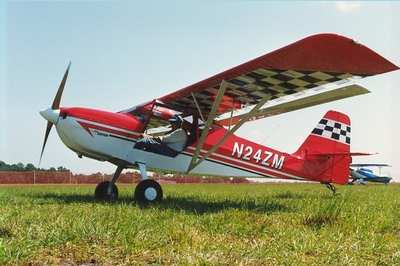Many Light Sport Aircrafts Are Taildraggers, But Is A Taildragger The Right Thing For A Sport Pilot?
Sport pilots, or pilots exercising sport pilot privileges, have a choice between tricycle gear airplanes and taildraggers. While the tricycle gear configuration appeals as the modern way to go, there are numerous advantages, fun being one of them, to the taildraggers. Aren’t choices wonderful!

Most of the FAA type certificated sport pilot eligible airplanes are the taildragger classics like the Piper Cub series, the Aeronca Champ, the Taylorcraft, and several others. On the other hand, several manufacturers and kit producers also produce tailwheel airplanes. The question becomes, is a taildragger the right thing for a sport pilot?
The “lore” of taildragger flying, according to many nosewheel pilots, is that taildraggers are difficult to takeoff and land. The mystique imagined by many of these same pilots is that anyone who does fly a taildragger is a “real” pilot. Taildragger pilots love to promote this lore and mystique but, to be truthful, almost anyone can become a good taildragger pilot.
The wrongly accepted lore that taildraggers need to be “tamed” is a myth that is born from the fact that very few pilots of the last 40 or 50 years received their initial training in a taildragger. These pilots have transitioned from tricycle gear to taildraggers. Any kind of transition training may often be more challenging than initial training.
When a pilot transitions to a plane with significant differences it is often necessary to “pigeon-hole” old skills and apply new skills. That’s easier said than done. Some tricycle gear skills do not work well in a taildragger and it takes some brain twisting to transfer the skills form nosewheel to tailwheel. Here are some more myths and facts about taildraggers.
Fact – It is easier to transition from a taildragger to a tricycle gear plane than from tricycle to taildragger. Example: If you learn to drive in a stick shift car it’s easy to transition to an automatic transmission, but the other way around ... no so much.
Myth – It takes longer to learn how to fly if initial training is performed in a taildragger. If there were such a thing as equal students, the training time to become a certificated pilot would be about the same for either landing gear configuration.
Myth – Taildraggers are more difficult to land in a crosswind. The skills required for landing a tricycle gear plane and a taildragger in a crosswind are the same. The difference is that a tricycle gear plane will help a pilot correct for poor crosswind skills (up to a point) and a taildragger is more intolerant of sloppy flying.
Fact – Taildraggers require more attention when taxiing in a wind. I said that the crosswind landing technique is the same for tricycle gear and tailwheel planes but the completion of the landing roll-out is different. A taildragger finishes a landing and taxies with the wing at an up angle. This means the wing may still want to fly even though the airplane is taxiing. Taxi techniques are learned to deal with this.
Fact – The difference between a flight in a tricycle gear plane and a taildragger amounts to less than 60 seconds during takeoff and landing. It’s not rocket science!
You can find a lot of information about taildragger flying on the web and in some very well written books. Look for a flight instructor that has experience teaching in taildraggers. If you are buying a new S-LSA taildragger, the manufacturers often provide the training or can set you up with the right person to do the job.
Dragging your tail is a fun kind of challenge and may be the perfect sport pilot choice.
(Image from file)
 ANN's Daily Aero-Term (04.26.24): DETRESFA (Distress Phrase)
ANN's Daily Aero-Term (04.26.24): DETRESFA (Distress Phrase) ANN's Daily Aero-Linx (04.26.24)
ANN's Daily Aero-Linx (04.26.24) Airborne 04.22.24: Rotor X Worsens, Airport Fees 4 FNB?, USMC Drone Pilot
Airborne 04.22.24: Rotor X Worsens, Airport Fees 4 FNB?, USMC Drone Pilot Airborne 04.24.24: INTEGRAL E, Elixir USA, M700 RVSM
Airborne 04.24.24: INTEGRAL E, Elixir USA, M700 RVSM Airborne-NextGen 04.23.24: UAVOS UVH 170, magni650 Engine, World eVTOL Directory
Airborne-NextGen 04.23.24: UAVOS UVH 170, magni650 Engine, World eVTOL Directory



